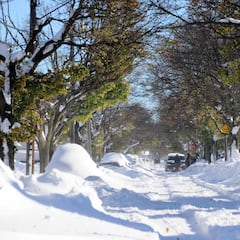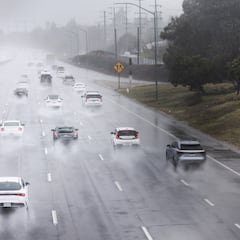When is hurricane season in Florida? Six months of tropical storms, cyclones and hurricanes
The US is a nation blessed with some of the most miles of coastline. However, every year coastal areas like Florida must be ready to deal with hurricanes.

Every year as the weather warms up, people look forward to more pleasant days spent outdoors. But those longer, warmer spring and summer days also help create the conditions for one of mother nature’s mightiest forces, hurricanes.
The hurricane season lasts for six months in the Atlantic basin, running from June 1 to Nov. 30, affecting areas like Florida. The period is a little longer in the Pacific but the tremendous storms are not bound by any set dates. Tropical cyclones can form at any time of the year.
Hurricane, cyclone or typhoon?
The powerful storms, or tropical cyclones, are found the world over forming around the equator in tropical and subtropical waters. They are called hurricanes in the Atlantic and Eastern Pacific, typhoons in the North Pacific and cyclones in the South Pacific and Indian Ocean.
Hurricanes get their name from the Taino, an indigenous people of the Caribbean. They called them “hurucane” which means evil wind.
The massive storms are a collection of clouds and clusters of thunderstorms that form a cyclone shape that typically spans 300 miles, but can span 1,000 miles and rise 10 miles high with destructive winds. Depending on the strength of the storm they can cause widespread destruction if they make landfall.
NHC is saddened to learn of the passing of Vern Dvorak, who pioneered the development of the Dvorak technique for estimating the intensity of tropical cyclones from satellite images. Developed in the 1970s, the technique is a staple in NHC's operations to this day. pic.twitter.com/Ni4q08qlba
— National Hurricane Center (@NWSNHC) September 21, 2022
Six months of hurricane season
The official start of the Atlantic and Central Pacific hurricane season begins 1 June while the Eastern Pacific begins 15 May. All the basins’ seasons that affect the US last until 30 November. However, there have been over 90 cyclone recorded outside of the standard season in the Atlantic basin since official records were kept.
The peak of the Atlantic season comes around 10 September, while the climatological peak in the Eastern Pacific basin is in July and August. In the Central Pacific more activity is noted in late August.
How do hurricanes form?
Hurricanes require three main ingredients; warm water (at least 80 degrees), moist air and wind. Tropical cyclones, or hurricanes, don’t form within 300 miles of the equator, either north or south, due to the lack of Coriolis force which causes the storm to spin.
In the Atlantic, winds coming from Africa evaporate the warm waters of the Atlantic putting more moisture in the air, which then condenses to form the storm clouds. As the storm clouds cluster together around a tropical depression, they form a concentrated system which can result in a hurricane.
How many hurricanes are there on average?
On average the Atlantic hurricane season can produce 12 named storms. Storms are named when the tropical storm reaches sustained wind speeds of 39 mph. When the wind speed reaches 79 mph, the storm becomes a hurricane. There are five categories of hurricanes on the Saffir-Simpson Hurricane Wind Scale. A typical season in the Atlantic will produce six hurricanes, three of those major hurricanes.
How are storms named?
Names are given to the potentially deadly storms in order to make them easily recognizable to the public so that people can be informed of impending danger. The National Hurricane Center began naming Atlantic tropical storms in 1953 but the process is now maintained by an international committee of the World Meteorological Organization (WMO).
Related stories
The WMO creates a list of 21 names for the six different regions where tropical cyclones form. Until 1979 only women’s names were used, but now men’s names alternate with women’s names. The lists of names are rotated every six years, but the names of especially destructive and deadly storms can be removed from the list. Examples for the US include Katrina (2005) and Sandy (2012).
The 2020 hurricane season was record-breaking with 30 named storms which necessitated using the Greek alphabet to name nine of the storms. This was the second time this had occurred, the previous time was in 2005 when there were 28 named storms. Now the WMO has created a supplemental list of 21 names for tropical storms in each of the six regions.



Complete your personal details to comment